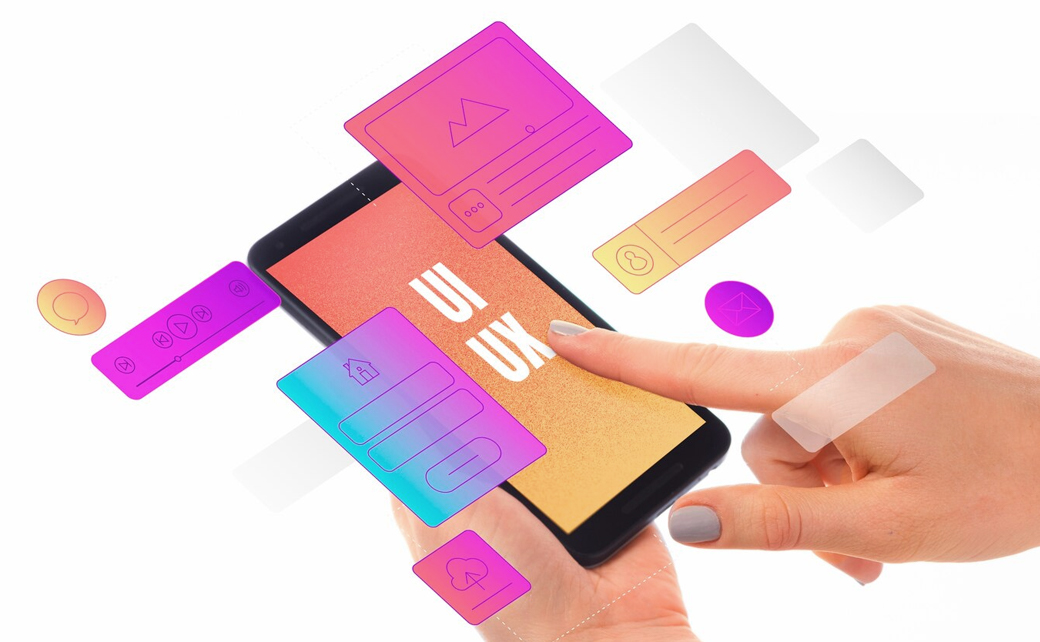UI vs. UX for Graphic Designers – Know the Differences and Synergies

In digital design, UI and UX development services are foundational pillars, each playing a crucial role in shaping a product's success. While often used interchangeably, they represent distinct design aspects, with UI focusing on the visual elements and UX on the overall user journey and satisfaction.
UI design pertains to the aesthetic aspects of a digital interface, encompassing everything from colours and typography to buttons and layout. On the other hand, UX design delves deeper into user interactions, aiming to create seamless, intuitive, and delightful experiences for users across various touchpoints.
Let’s explore the differences between UI and UX in our comprehensive guide.
Understanding UI
UI, or User Interface, refers to the graphical layout of a digital product. It includes all the elements users interact with, such as buttons, menus, and navigation bars. The primary goal of UI design is to create visually appealing and intuitive interfaces that facilitate smooth interactions between users and the product.
UI design plays a pivotal role in shaping the first impression of a digital product. A well-crafted UI enhances the aesthetic appeal and improves usability and accessibility. By incorporating design principles such as consistency, clarity, and simplicity, UI designers strive to create interfaces that resonate with users and foster positive interactions.
Key Elements of UI
UI design encompasses many elements, each serving a specific purpose in enhancing user experience. These elements include layout, typography, colour scheme, imagery, and interactive components. By carefully orchestrating these elements, UI designers craft interfaces that look visually appealing and function seamlessly across different devices and screen sizes.
Understanding UX
UX, or User Experience, encapsulates users' overall experience while interacting with a digital product or service. It goes beyond visual aspects and encompasses the entire user journey, from initial discovery to task completion. UX design focuses on understanding user needs, behaviours, and motivations to create experiences that are intuitive, efficient, and enjoyable.
UX design is instrumental in determining the success of a digital product. A well-designed UX can significantly impact user satisfaction, retention, and loyalty. By prioritising user needs and preferences, UX designers strive to create experiences that meet and exceed user expectations, ultimately driving business value and competitive advantage.
Key Elements of UX
UX design involves a holistic approach that considers various factors influencing user experience. These factors include user research, information architecture, interaction design, usability testing, and iteration. By employing user-centred design methodologies, UX designers gain insights into user behaviour and preferences, allowing them to design intuitive, efficient, and emotionally engaging experiences.
Differences between UI and UX
Focus and Scope
One of the primary distinctions between UI and UX lies in their focus and scope. While UI design centres around a digital interface's visual elements and aesthetics, UX design encompasses a broader spectrum of considerations, including user research, information architecture, and interaction design. UI designers primarily focus on visually appealing layouts and interactive elements, whereas UX designers delve deeper into understanding user needs, behaviours, and motivations to create seamless and meaningful experiences.
Role in the Design Process
Another key difference between UI and UX is their role in the design process. UI design typically comes after UX design in the product development lifecycle. Once UX designers have defined a product's overall structure and functionality, UI designers step in to bring those concepts to life through visually compelling designs. While UI and UX are interrelated and often collaborate closely, they involve distinct skill sets and methodologies, each contributing to the overall success of the design endeavour.
Skillsets and Expertise Required
UI and UX design require different skill sets and expertise. UI designers understand visual design principles, typography, colour theory, and layout techniques. They are proficient in design tools such as Adobe XD, Sketch, or Figma and have a keen eye for aesthetics and detail. In contrast, UX designers are skilled in user research methodologies, wireframing, prototyping, and usability testing. They excel in empathising with users, understanding their needs, and translating those insights into intuitive, user-friendly designs.
Synergies between UI and UX
Collaboration in Product Development
Despite their differences, UI and UX are inherently interconnected and collaborate closely throughout product development. Effective collaboration between UI and UX teams ensures design decisions are informed by user insights and aligned with business goals. By working hand in hand, UI and UX designers can create cohesive, holistic experiences that resonate with users and drive business success.
Creating Seamless User Experiences
The synergy between UI and UX is most evident in creating seamless user experiences. While UI focuses on the visual presentation of a product, UX ensures that the overall experience is intuitive, efficient, and enjoyable. By integrating visually appealing interfaces with intuitive navigation and interaction patterns, UI and UX designers can create experiences that delight users and keep them engaged.
Achieving Business Goals Through Design
Ultimately, the synergy between UI and UX is instrumental in achieving business goals through design. A well-designed interface that offers a seamless and delightful user experience can drive customer satisfaction, retention, and loyalty. By prioritising user needs and preferences, UI and UX designers can create products that not only meet but exceed user expectations, ultimately contributing to the success and competitiveness of the business.
In conclusion, while UI and UX represent distinct design aspects, their synergy is essential for creating successful digital products and services. By understanding the differences and synergies between UI and UX, organisations can leverage the strengths of both disciplines to deliver exceptional user experiences and drive business growth in today's competitive landscape.







